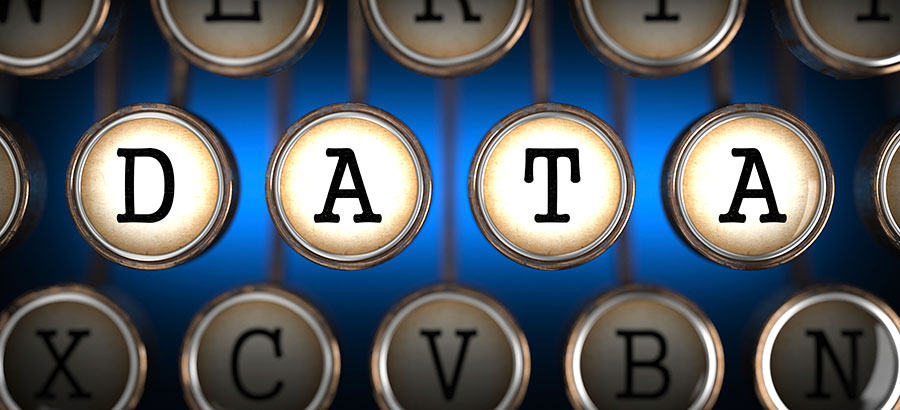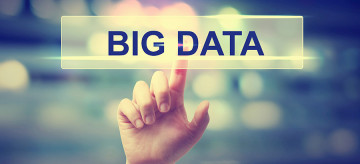- Advertising
- Bare Metal
- Bare Metal Cloud
- Benchmarks
- Big Data Benchmarks
- Big Data Experts Interviews
- Big Data Technologies
- Big Data Use Cases
- Big Data Week
- Cloud
- Data Lake as a Service
- Databases
- Dedicated Servers
- Disaster Recovery
- Features
- Fun
- GoTech World
- Hadoop
- Healthcare
- Industry Standards
- Insurance
- Linux
- News
- NoSQL
- Online Retail
- People of Bigstep
- Performance for Big Data Apps
- Press
- Press Corner
- Security
- Tech Trends
- Tutorial
- What is Big Data
Big Data: Are We All Speaking the Same Language?
Big data has brought a big host of new terms along for the ride. Though often touted as just "buzzwords," it's important that everyone understands exactly what is conveyed by these terms so that discussion on big data can be thorough, meaningful, and accurate. Here are some of the most common terms you'll see.

Big data has brought a big host of new terms along for the ride. Though often touted as just “buzzwords,” it’s important that everyone understands exactly what is conveyed by these terms so that discussion on big data can be thorough, meaningful, and accurate. Here are some of the most common terms you’ll see.
Algorithm

Algorithms are mathematical formulas to solve problems. In big data, algorithms are calculated by computer software. Algorithms perform analysis on data, and are used to solve problems or automate the processing of data.
Analytics
Big data is worthless without analytics. This is the process of gathering data and processing it in a way that generates insight into what the data means. Since big data is so large, computers do a better job of this than people.
Big Data
Big data is characterized by the amount of complexity of the data. Big data is that which is so large and complicated that it cannot be processed using typical data processing applications.
Cloud
The cloud, or cloud computing, is software or data that lives and runs on remote servers instead of local (onsite) servers. It is generally accessed via the Internet, and is typically held and managed by a cloud vendor.
Crowdsourcing
Big data and analysis is complicated, so people have developed crowdsourcing to collaborate for better problem solving. Crowdsourcing is sharing a problem or task with others to come up with a solution.
Database
A collection of data in digital form, including the structural organization of the data, is a database. It is usually managed via a database management system, called a DBMS.
Data Cleansing
This is the process of examining data and removing duplications or corrupted data, finding and replacing missing data, and making the data more consistent.
Data Scientist
Data scientists are experts at analyzing data to deliver insight and value out of it. These individuals have skill and experience in math, computer science, data analysis, statistics, and business.
Gamification
Gamification is the act of taking something that is not a game (such as business processes, help desk operations, etc.) and putting it into a game-like form. In the arena of big data, this is a useful means to provide incentive to collect and utilize data.
Hadoop
Hadoop, a brainchild of Apache, is the most popular software framework used to store, process, and analyze big data. It is made up of a group of programs that are specifically designed to work with enormous data sets. Its most useful feature is that it allows big data to be spread across a number of smaller storage devices, so it does not require a huge machine to house and process big data.
Internet of Things

Sometimes abbreviated as IoT, this is the phenomenon wherein common items are connected to the Internet. Things like mobile devices, medical devices, vehicles, machinery, smart homes, etc. transmit data, thereby improving their usefulness.
Predictive Analysis
When big data is analyzed in such a way as to predict what will happen in the future, it is said to be predictive analysis.
Structured Data and Unstructured Data
Structured data is data which can be included in table format and organized in relation to other data within the table. Conversely, unstructured data cannot be organized in table form in relation to other data. Structured data includes things like system logs. Unstructured data includes things like audio files, videos, and text documents.
When you’re ready to delve into the practical business uses of big data, no means of storage and analysis beats the full metal cloud. Bigstep’s full metal cloud is developed specifically for working with big data. Bigstep offers solutions for Hadoop operations and much more. Visit for a free test of Bigstep’s bare metal cloud today.
Readers also enjoyed:

4 Powerful Ways Manufacturers are Putting Big Data to Extraordinarily Good Use


Leave a Reply
Your email address will not be published.